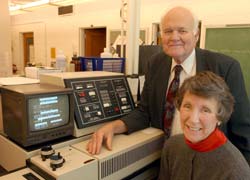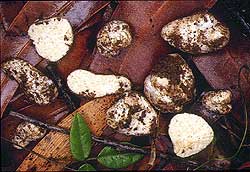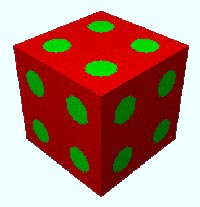
Scientists from Johns Hopkins and the University of Wisconsin have discovered that a protein called Sir2, which is found in nearly all living cells, has a new function that might help explain how calorie restriction can increase lifespans for some animals, the scientists say. Their report appeared in the Dec. 20 issue of Science.
A number of laboratories have shown that restricting total calorie intake extends the lifespans of organisms ranging from yeast to laboratory animals. Others have

The biological clock – timekeeper for virtually every activity within living things, from sleep patterns to respiration – is a single protein, Purdue University researchers report.
The husband and wife team of D. James and Dorothy Morré has discovered this protein, which is responsible for setting the length of periods of activity and inactivity within cells. If the protein is altered, an organism’s body will experience “days” of different length – ranging from 22 to 42 hours in

Scientists at Long Ashton Research Station have identified a gene with a pivotal role in regulating seed germination. According to an article published in the January issue of BBSRC business, the Arabidopsis COMATOSE (CTS) gene, is vital for breaking seed dormancy. It is also analogous to the human X-ALD gene, which featured in the 1992 film “Lorenzo’s oil”. Treatment of cts mutants with a plant version of Lorenzo’s oil cures their inability to germinate.
The researchers were inves

The University of the Basque Country, IBERDROLA (an electricity utility supplying the Basque Country), the enterprises INGETEAM and INDAR and innovative energies company EHN have participated jointly in this research project. The project has put forward an innovative use of wind-sourced energy to control fluctuations on the grid. The research site where measurements were made was the Salajones wind park in Sanguesa (Navarre).
In recent years the electricity utilities have shown much greater

An Australian scientist has made a discovery which is electrifying world fungal biology – a new truffle genus related to the famous Amanita family, or fairy toadstools.
The Amanita family is famed worldwide for the red and white-spotted toadstools beloved of children’s fairy tales, the lethal Death Cap beloved of tabloid media, and a range of delicious edible fungi beloved of gourmets.
The find, by CSIRO Forestry and Forest Products mycologist Dr Neale Bougher, highli

Technique could help bring efficiency of biology to man-made materials
A Princeton chemist has developed a general mathematical system for designing materials that perform two functions at once, even when the desired properties sometimes conflict with each other.
Salvatore Torquato and colleagues used computers to calculate the optimum structure for any material that is a composite of two substances with differing properties. The achievement is the first simple example of a

– new calculation confirms standard model of particle physics. Contribution of hadronic vacuum polarization determined with unprecedented accuracy. The magnetic moment of the muon is an important precision parameter for…
Technique may prevent formation of unwanted waves that siphon off needed energy. Heating plasma to the ultra-high temperatures needed for fusion reactions requires more than turning the dial on a…

An international team of astronomers, led by researchers from the Astronomical Observatory of the University of Warsaw, have identified a new class of cosmic X-ray sources. The findings have been…

How deubiquitinases USP53 and USP54 cleave long polyubiquitin chains and how the former is linked to liver disease in children. Deubiquitinases (DUBs) are enzymes used by cells to trim protein…

Conceptual blueprint to analyze experimental catalyst data. Machine learning (ML) models have recently become popular in the field of heterogeneous catalyst design. The inherent complexity of the interactions between catalyst…

Antibody that Neutralizes Inhibitory Factors Involved in Nerve Regeneration Leads to Enhanced Motor Function after Acute Spinal Cord Injury. Researchers at 13 clinics in Germany, Switzerland, the Czech Republic and…

How simulations help manufacturing of modern displays. Modern materials must be recyclable and sustainable. Consumer electronics is no exception, with organic light-emitting diodes (OLEDs) taking over modern televisions and portable…

“Neurons that fire together, wire together” describes the neural plasticity seen in human brains, but neurons grown in a dish don’t seem to follow these rules. Neurons that are cultured…

The quest for sustainable energy solutions has been a major focus of scientific research for decades. Solar energy, a clean and renewable source, has emerged as a promising alternative to…

With a processing speed a billion times faster than nature, chip-based laser neuron could help advance AI tasks such as pattern recognition and sequence prediction. Researchers have developed a laser-based…

New technology could remotely identify various types of plastics, offering a valuable tool for future monitoring and analysis of oceanic plastic pollution. Researchers have developed a new hyperspectral Raman imaging…

Artificial Intelligence (AI) has established a strong presence across industries, large and small. The “VoBaKI” research project has empowered small and medium-sized enterprises (SMEs) with an innovative tool to independently…